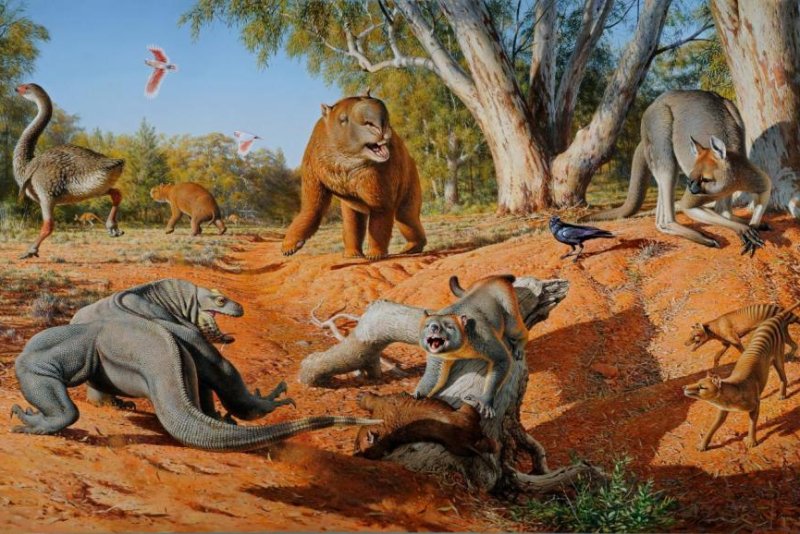Some 85 percent of Australian megafauna was wiped out in the few thousand years after humans arrived on the continent. Australia's megafauna included 1,000-pound kangaroos, 2-ton wombats, 400-pound flightless birds and lizards stretching 25 feet in length, among others. Photo by Peter Trusler/Monash University
Jan. 20 (UPI) -- Analysis of ancient animal dung has yielded a more accurate timeline of the decline and disappearance of Australia's megafauna. The timeline suggests humans, not climate change, were responsible for megafauna extinction on the island continent.
The dung of plant-eating mammals spawn fungal spores, which can be detected thousands of years later. By measuring concentrations of fungal spores in ancient sediment cores, researchers can estimate the abundance of large animals.
"The abundance of these spores is good evidence for a lot of large mammals on the southwestern Australian landscape up until about 45,000 years ago," Gifford Miller, a professor of geological sciences at the University of Colorado, Boulder, explained in a news release. "Then, in a window of time lasting just a few thousand years, the megafauna population collapsed."
Miller and his colleagues shared their analysis in the journal Nature Communications.
Some 50,000 years ago -- around the time the first humans arrived -- Australia hosted massive kangaroos, wombats, lizards, flightless birds, lions and tortoises. Some 85 percent of megafauna were wiped out in the few thousand years after humans arrived on the continent.
There is no evidence of significant climate change during the decline of Australian megafauna. Previous studies have shown how even at a modest kill rate, humans can quickly snuff out megafauna species.
"The results of this study are of significant interest across the archaeological and Earth science communities and to the general public who remain fascinated by the menagerie of now extinct giant animals that roamed the planet -- and the cause of their extinction -- as our own species began its persistent colonization of Earth," concluded Sander van der Kaars of Australia's Monash University.















